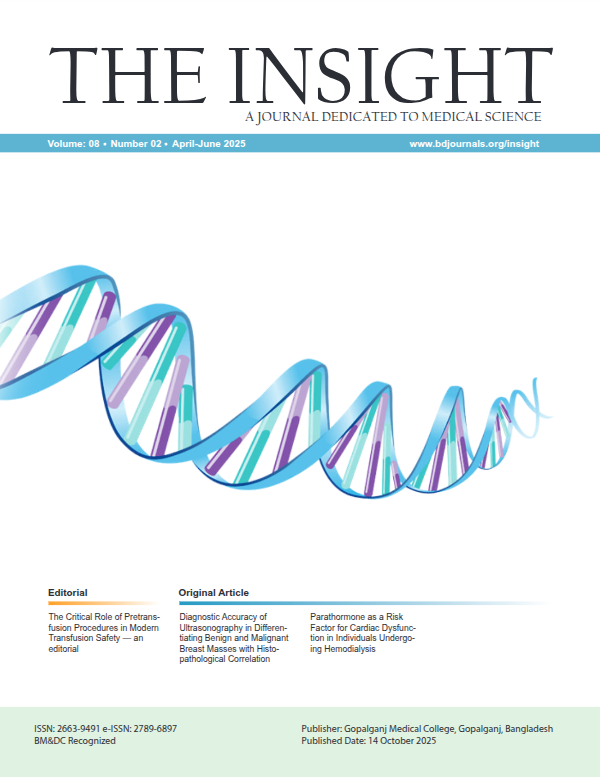Abstract
Introduction: Urinary tract infections (UTIs) in children are common but increasingly complicated by antimicrobial resistance. Understanding pathogen profiles, resistance patterns, and clinical outcomes is essential to optimize management. Methods & materials: This cross-sectional study included 53 children diagnosed with culture-confirmed UTIs at the Dhaka National Medical College. Demographic, clinical, laboratory, and treatment data were collected prospectively. Isolates were identified using standard microbiological methods, and antibiotic susceptibility was determined via the Kirby–Bauer disk diffusion method, following CLSI guidelines. Statistical analysis explored associations between clinical variables and multidrug resistance (MDR). Results: Escherichia coli (66.0%) and Klebsiella spp. (18.9%) were the predominant pathogens. MDR was detected in 34.0% of cases, with highest resistance to cefixime (71.7%), ceftriaxone (66.0%), and ciprofloxacin (62.3%). Amikacin (90.6%) and carbapenems (≥94%) remained highly effective. Female sex (OR: 3.25, p=0.028), previous UTI (OR: 2.95, p=0.041), and CRP >50 mg/L (OR: 3.80, p=0.014) were significant predictors of MDR. Despite empiric therapy with ceftriaxone and amikacin, 11.3% experienced treatment failure and 75.5% required hospitalization. Median defervescence time exceeded 3 days in 81.1% of cases. Conclusion: There is a high prevalence of multidrug-resistant uropathogens in pediatric UTIs, particularly against commonly used oral antibiotics. Predictive markers like CRP and prior UTI history may guide early intervention. Empiric regimens should consider local resistance trends, and routine susceptibility testing should be prioritized to improve treatment outcomes.

This work is licensed under a Creative Commons Attribution 4.0 International License.
Copyright (c) 2025 The Insight





 PDF
PDF